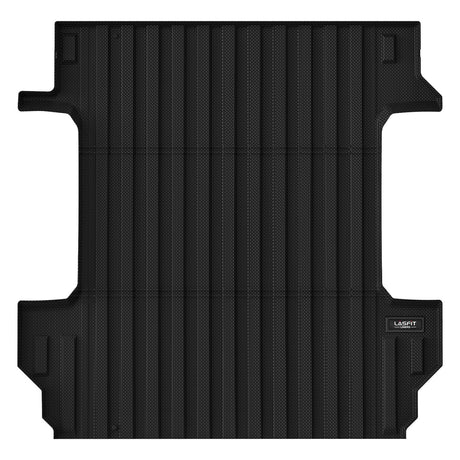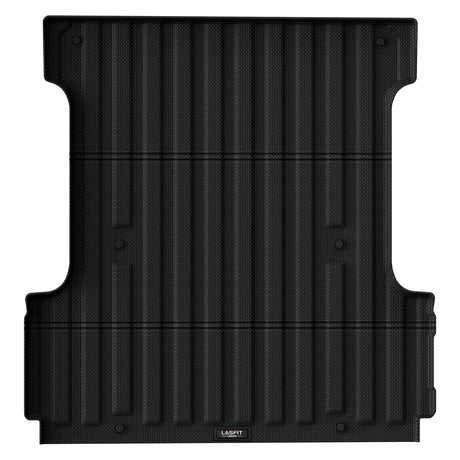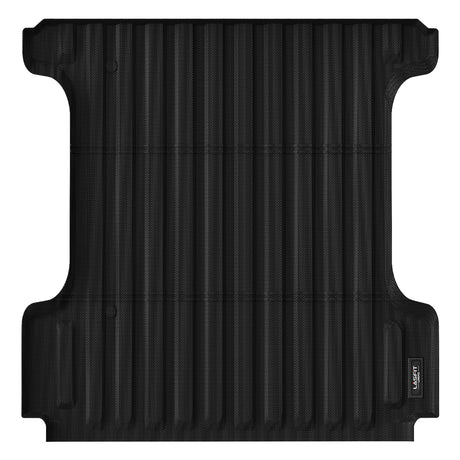Choosing the right truck bed liner is essential for preserving the appearance and functionality of your truck bed. A high-quality bed liner not only protects your truck from scratches, dents, and rust but also enhances its resale value. With so many materials available, it can be challenging to determine which one suits your needs best. In this article, we’ll explore the most common types of truck bed liner materials, compare their pros and cons, and help you make an informed decision about the best material for your truck.
Common Types of Truck Bed Liner Materials
When selecting a truck bed mat or truck bed liner, it’s important to understand the different material options available. Here are the most common materials used in pickup bed mats and liners:
1. TPE Bed Liner
TPE (Thermoplastic Elastomer) is a popular material choice for truck bed mats and bed liners. TPE liners are known for their durability, flexibility, and eco-friendly properties. This material is highly resistant to UV damage, moisture, and abrasion, making it an excellent choice for long-term protection. TPE liners also have a soft, rubber-like texture, providing added cushioning for your truck bed.
Lasfit offers TPE truck bed mats that provide the ultimate protection while being easy to clean and install. TPE is also lightweight and odor-free, making it a favorite among environmentally conscious truck owners.
2. Rubber (Roll-on Liners and Mats)
Rubber has been a long-standing material choice for truck bed mats and bed liners. Rubber truck bed mats and roll-on liners are known for their toughness and ability to withstand heavy loads and impact. Rubber liners come in two forms: easy rubber bed mats, which are pre-cut to fit your truck’s bed, and roll-on rubber liners, which are applied as a liquid and form a protective coating once cured.
While rubber truck bed mats offer excellent grip and protection, they can be prone to cracking under extreme temperatures, especially if exposed to constant UV radiation.
3. Carpet (Carpet Liners)
Carpet liners are a softer option for truck beds and are designed primarily for those who want to protect their truck bed from scratches while adding a layer of comfort for carrying delicate items. Carpet bed liners are generally made from a synthetic or nylon material and are often backed with a rubber or vinyl layer for additional protection against water.
While carpet liners may not be as durable as rubber or TPE options, they are popular for their aesthetic appeal and ability to protect sensitive cargo. However, they do require more maintenance, as they can absorb moisture, dirt, and stains.
Comparison of Materials: Pros and Cons
Here’s a detailed comparison of the most common truck bed liner materials, including their advantages and disadvantages:
1. TPE Bed Liner
Pros:
- Eco-friendly: TPE is a sustainable material that is free from harmful chemicals.
- UV and Abrasion-Resistant: TPE liners are highly resistant to UV damage, preventing fading and cracking over time.
- Soft and Flexible: The material is soft to the touch, providing added cushioning for your truck bed, which helps protect your cargo and truck surface.
- Easy to Clean: TPE liners are easy to maintain with simple cleaning solutions and water, making them low-maintenance.
Cons:
- Cost: TPE bed liners tend to be more expensive than rubber or carpet options.
- Less Slip Resistance: While TPE is flexible, it may not provide as much grip as rubber liners when it comes to holding cargo in place.
2. Rubber (Roll-on Liners and Mats)
Pros:
- Durable and Tough: Rubber liners are known for their strength and resistance to heavy impacts and abrasions. They provide solid protection for your truck bed.
- Excellent Grip: Rubber liners offer superior traction, making them ideal for preventing cargo from shifting during transportation.
- Can Withstand Heavy Loads: Rubber mats are highly effective in absorbing the pressure from heavy equipment or materials, protecting your truck bed from damage.
Cons:
- Prone to Cracking: Rubber can crack under extreme temperature conditions, particularly when exposed to excessive UV rays.
- Fading and Degradation: Over time, rubber may degrade or lose its flexibility due to UV exposure and weather conditions.
- Installation Time for Roll-on Liners: If you choose a roll-on rubber liner, it can take longer to apply and cure compared to easy rubber bed mats that are pre-cut and ready to install.
3. Carpet (Carpet Liners)
Pros:
- Soft and Cushioned: Carpet liners offer a softer, cushioned surface for transporting delicate items that may require extra protection from bumps and scratches.
- Aesthetic Appeal: Carpet liners give your truck bed a more refined and polished look, making them popular among truck owners who use their vehicle for both work and leisure.
- Quiet Operation: Unlike rubber or TPE, carpet liners absorb some noise from cargo, making it a quieter option when driving.
Cons:
- Absorbs Moisture and Dirt: Carpet liners can soak up water, dirt, and other contaminants, leading to potential mold or mildew buildup if not cleaned regularly.
- Requires More Maintenance: Carpet bed liners require frequent cleaning and upkeep, especially if exposed to dirt, water, or chemicals.
- Less Durability: Carpet doesn’t provide the same level of durability and long-term protection as rubber or TPE, especially when it comes to heavy-duty use.
Factors to Consider When Choosing the Best Bed Liner Material
When deciding on the best bed liner material for your truck, there are several factors you should take into account:
- Durability: Consider how often you use your truck and what type of load it handles. If you carry heavy tools or materials, a more durable option like rubber truck bed mats or TPE liners would be ideal.
- Protection Level: Think about the level of protection you need. If you’re looking for basic scratch and dent protection, a pickup bed mat may be sufficient. However, for full-bed coverage, truck bed liners made from TPE or rubber may offer the best protection.
- Climate: If you live in an area with extreme weather conditions (very hot or cold temperatures), a material that can withstand these conditions is crucial. TPE bed liners tend to perform well in varying temperatures, while rubber may crack under extreme conditions.
- Installation: If you prefer a hassle-free option, easy rubber bed mats or TPE truck bed mats are easy to install with minimal effort. Roll-on liners, however, require more time and expertise to apply.
- Aesthetic: If the appearance of your truck bed is important, carpet bed liners can offer a sleek and comfortable look, especially for owners who regularly transport delicate items.
Best Material for Different Use Cases
Choosing the best material for your truck bed depends on your unique needs. Here are some recommendations based on different use cases:
- For Heavy-Duty Use: If your truck is used for construction, hauling heavy equipment, or carrying large loads, TPE bed liners or rubber truck bed mats provide the strongest protection against impact, abrasion, and UV damage.
- For Light Use: If you mainly use your truck for light transport or personal use, a pickup bed mat made of rubber or TPE will provide adequate protection without the need for full coverage.
- For Sensitive Cargo: For truck owners who frequently transport fragile or delicate items, carpet bed liners can provide a cushioned surface that protects against scratches and damage while offering a softer touch.
Conclusion
Choosing the best truck bed liner material depends on your specific needs, climate, and how often you use your truck. TPE bed liners are a top choice for their durability, eco-friendliness, and versatility, while rubber truck bed mats offer toughness for heavy-duty use. Carpet liners are great for those seeking a soft, aesthetic option for light-duty applications.
At Lasfit, we offer a range of high-quality truck bed mats and bed liners made from TPE material, designed to provide maximum protection for your truck bed. Whether you're hauling heavy materials or just need everyday protection, Lasfit has the right solution for you.




